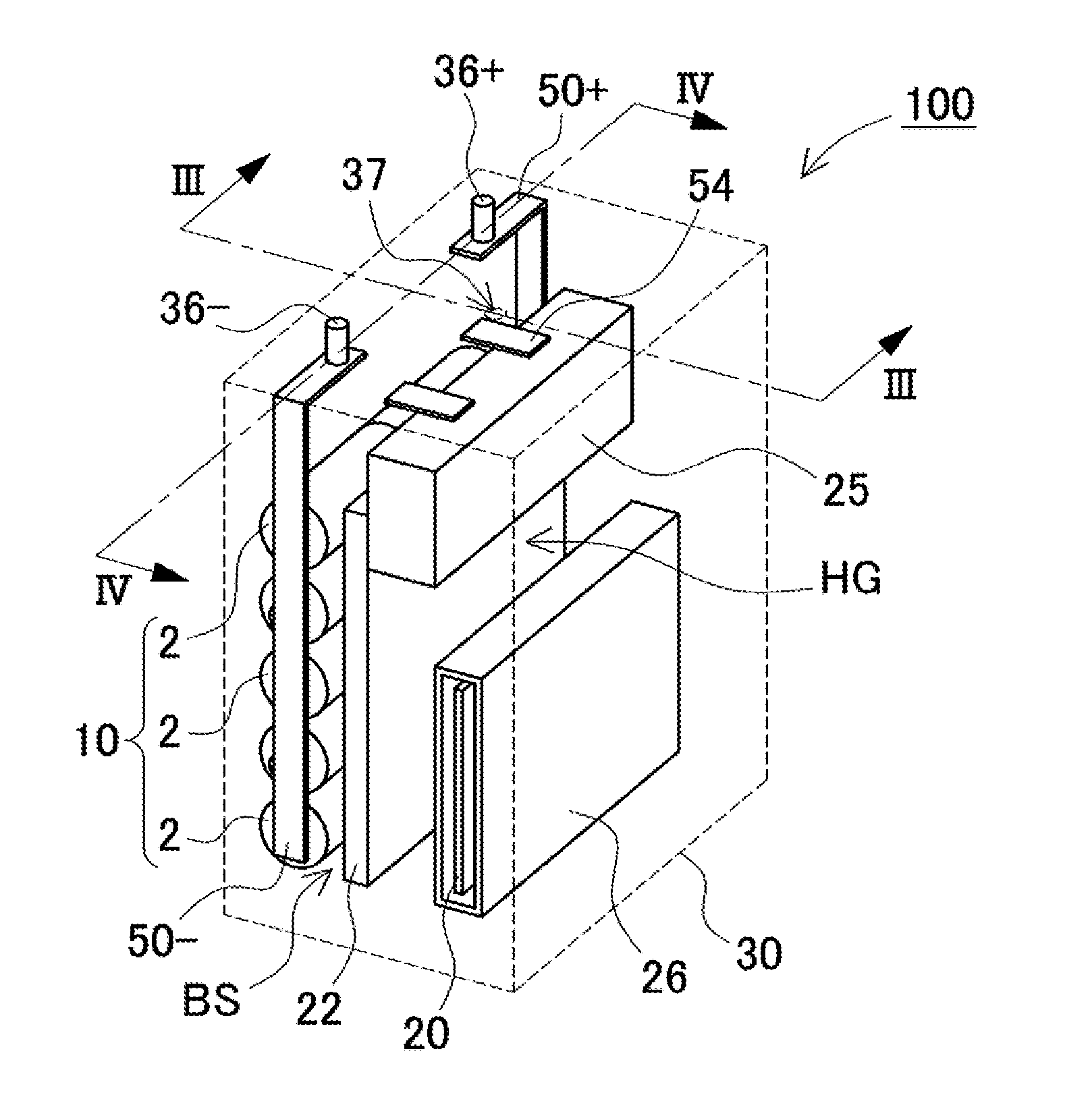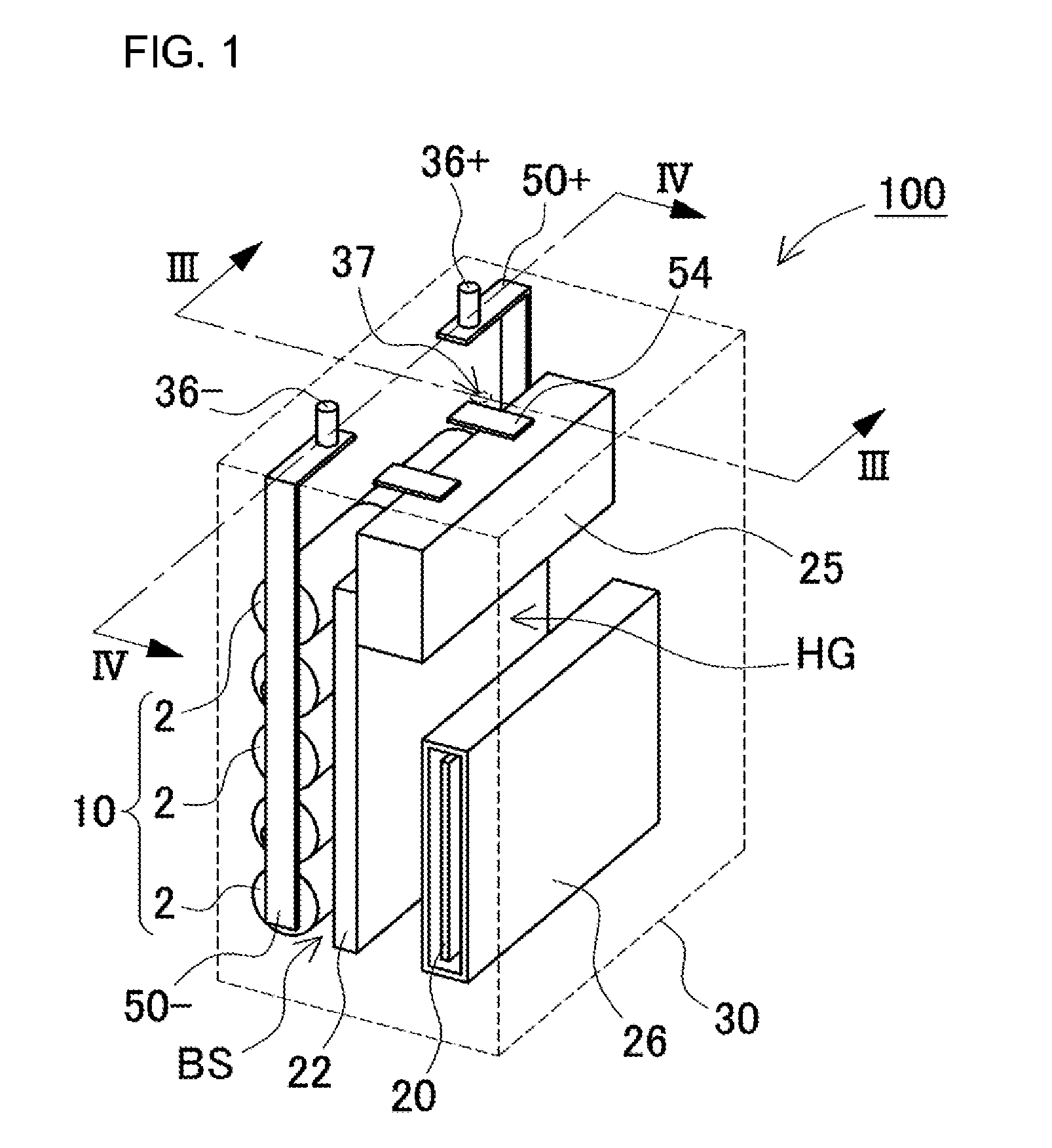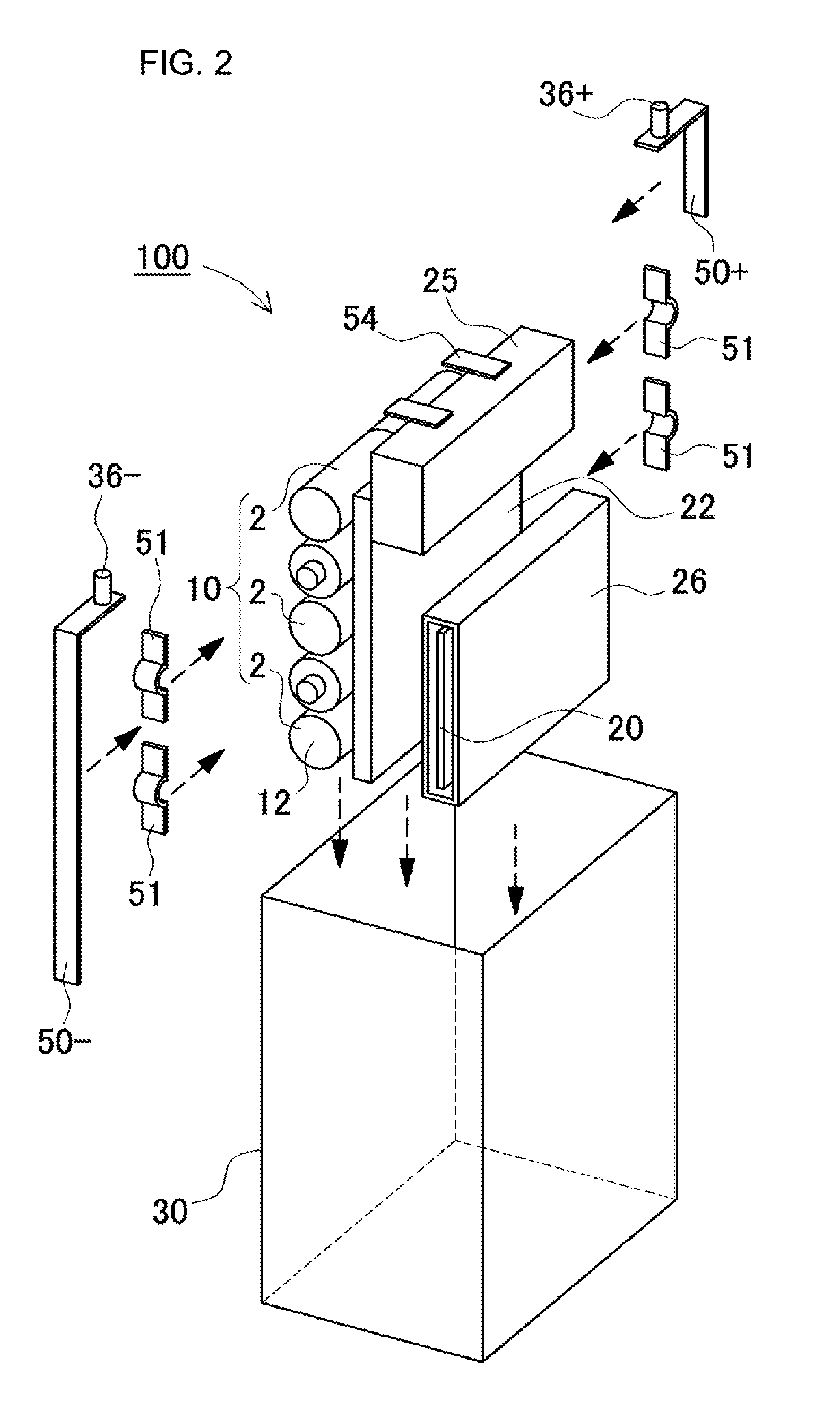Vehicle-mounted power supply device and vehicle comprising power supply device
a power supply device and vehicle technology, applied in the direction of nickel accumulators, cell components, batteries, etc., can solve the problems of increased cost, loss, and complicated circuit, and achieve the effect of efficient heat radiation
- Summary
- Abstract
- Description
- Claims
- Application Information
AI Technical Summary
Benefits of technology
Problems solved by technology
Method used
Image
Examples
embodiment 1
[0028]A perspective view showing a power supply device 100 related to one embodiment 1 of the present invention is shown in FIG. 1. An exploded perspective view of the power supply device 100 is shown in FIG. 2. The internal structure of the power supply device 100 is shown in sectional views of FIG. 3 and FIG. 4. The power supply device 100 shown in these figures has a battery block 10 including a plurality of secondary batteries 1, a circuit board 20 electrically connected to the battery block 10, a storage case 30 which stores the plurality of the secondary batteries 1 and the circuit board 20, and a pair of output terminals 36 which output total voltage of the battery block 10. In FIG. 1, the storage case 30 is shown in a dashed line in order to show the internal structure of the power supply device 100. The power supply device 100 for a vehicle as the sub-battery, as shown in FIG. 8 described below, is connected in parallel to the battery of 12 V for an electric equipment devic...
PUM
| Property | Measurement | Unit |
|---|---|---|
| nominal voltage | aaaaa | aaaaa |
| nominal voltage | aaaaa | aaaaa |
| total voltage | aaaaa | aaaaa |
Abstract
Description
Claims
Application Information
 Login to View More
Login to View More - R&D
- Intellectual Property
- Life Sciences
- Materials
- Tech Scout
- Unparalleled Data Quality
- Higher Quality Content
- 60% Fewer Hallucinations
Browse by: Latest US Patents, China's latest patents, Technical Efficacy Thesaurus, Application Domain, Technology Topic, Popular Technical Reports.
© 2025 PatSnap. All rights reserved.Legal|Privacy policy|Modern Slavery Act Transparency Statement|Sitemap|About US| Contact US: help@patsnap.com



